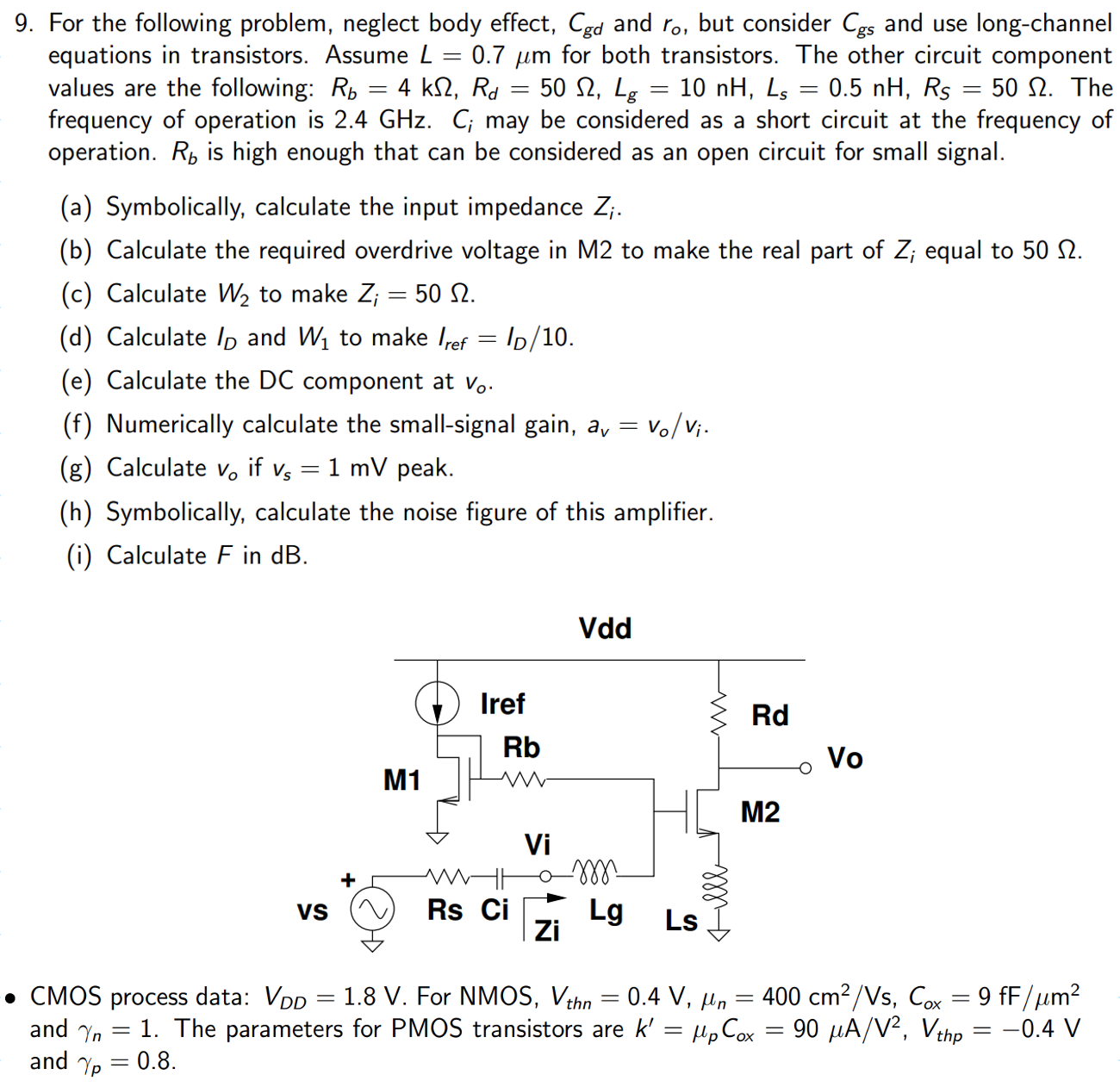For the following problem, neglect body effect, Cgd and ro, but consider Cgs and use long-channel equations in transistors. Assume L = 0.7 μm for both transistors. The other circuit component values are the following: Rb = 4 kΩ, Rd = 50 Ω, Lg = 10 nH, Ls = 0.5 nH, RS = 50 Ω. The frequency of operation is 2.4 GHz. Ci may be considered as a short circuit at the frequency of operation. Rb is high enough that can be considered as an open circuit for small signal. (a) Symbolically, calculate the input impedance Zi. (b) Calculate the required overdrive voltage in M2 to make the real part of Zi equal to 50 Ω. (c) Calculate W2 to make Zi = 50 Ω. (d) Calculate ID and W1 to make Iref = ID/10. (e) Calculate the DC component at v0. (f) Numerically calculate the small-signal gain, av = vo/vi. (g) Calculate vo if vs = 1 mV peak. (h) Symbolically, calculate the noise figure of this amplifier. (i) Calculate F in dB. CMOS process data: VDD = 1.8 V. For NMOS, Vthn = 0.4V, μn = 400 cm2/Vs, Cox = 9 fF/μm2 and γn = 1. The parameters for PMOS transistors are k′ = μpCox = 90 μA/V2, Vthp = −0.4V and γp = 0.8.
